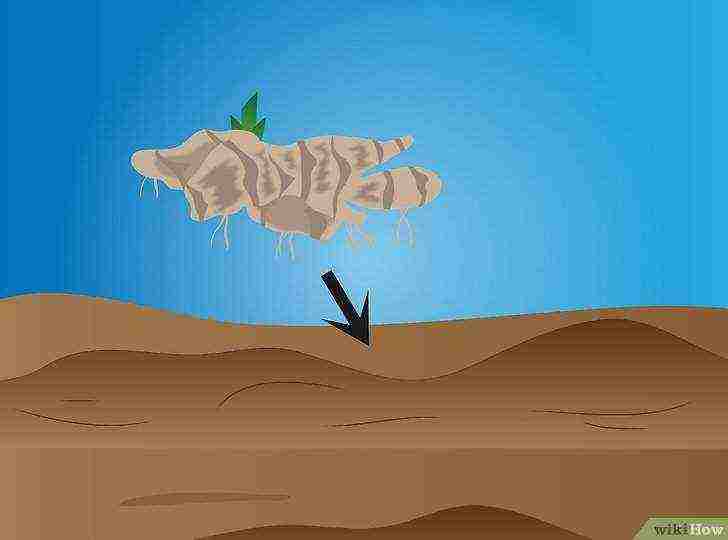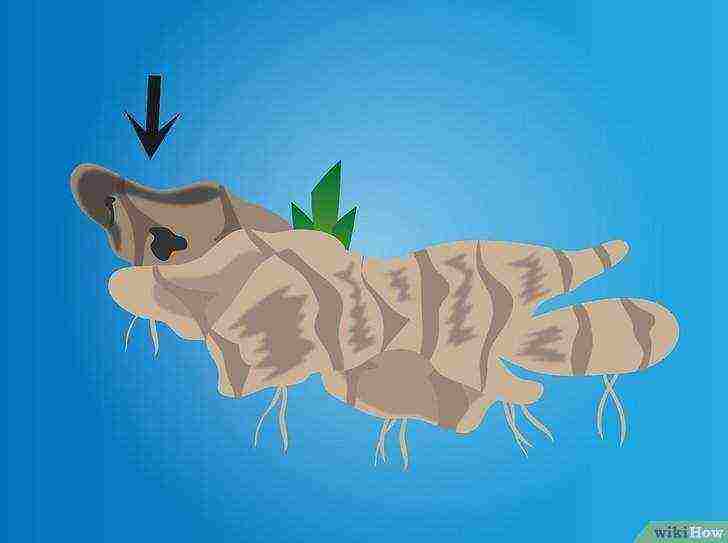Content [show]
How to grow bearded irises on the balcony
 Greetings, friends!
Greetings, friends!
Irises have always attracted attention with their beauty and aroma. Bearded varieties brought from Germany look beautiful both in the garden and in a pot on the balcony. This unpretentious type of irises grows beautifully in any conditions. They can be planted both in spring and in summer, and even in autumn.
When grown by seed, the irises become smaller and less beautiful.
In order to conduct growing irises at home and on the balcony, it is best to purchase a ready-made plant with a developed root system, without damage. The bulb should have the beginnings of new roots. Her color should be uniform, without dark spots. The root part should be green, rich in color and have about 10 leaves.
When the plant is purchased, it needs to be dried a little so that the upper part of the root system is slightly weathered.
To plant irises on the balcony, you need to take a mixture of soil with peat and the addition of phosphorus nitrogen and potassium fertilizers, instead of potash fertilizers, you can take ash, at the rate of 30 grams per plant. The soil can be alkaline or slightly acidic, necessarily light and loose. It is not advisable to add organic fertilizers, otherwise the plant will become thickened and start to hurt.
At the bottom of the container, where the iris will grow, you can pour a layer of shells, pebbles or expanded clay. To prevent moisture stagnation, there must be holes in the container.
In a small hole, a root (bulb) is planted so that the above-root part remains practically free and is watered with settled water.
At first, seedlings can stand in a dark, cool place if flowering is expected in winter. Or it is exhibited right away on the balcony so that it blooms in early autumn.
Also, for better growth, the rhizome should be tilted slightly to the south so that the upper part of the iris goes north. This allows the plant to grow faster and not get sick.
At the beginning of winter, irises are exposed to the light so that they bloom by February.
When planting several plants at once, you need to purchase for them  separate pots or a long container that will allow you to plant them spaciously, since irises do not like tightness. The distance should be at least half a meter between them. Low-growing (dwarf) varieties can be planted at a distance of 25 centimeters.
separate pots or a long container that will allow you to plant them spaciously, since irises do not like tightness. The distance should be at least half a meter between them. Low-growing (dwarf) varieties can be planted at a distance of 25 centimeters.
Around the plant, you need to loosen the soil and eliminate weeds as they appear. It is impossible to water the soil too much, since all varieties of bearded irises do not like excess moisture.
Miniature dwarfs, these are early varieties of bearded irises, reaching a height of 20 centimeters and having large beautiful flowers.
The standard dwarf varieties, which grow up to 35 centimeters, bloom after the miniature species.
Medium varieties of bearded irises reach 70 centimeters.
Tall bearded irises are considered more popular.
For growing bearded irises on a glazed balcony in winter, Siberian iris, Aryl, Ideal, Appolo are suitable.
When the plant grows, after two years it can be divided and transplanted.
Can be carried out growing irises at home absolutely any varieties, but you need to take into account that high varieties can grow greatly and take up a lot of space, and miniature and dwarf irises can be planted around the perimeter of the balcony and enjoy their beautiful and fragrant flowers. Read also about diseases and pests of irises. See you!

How to grow irises?
How to grow irises. Irises: home care. Irises: soil. Irises: transplant.Conditions for growing iris.
Iris reticulata
Most plants in the Iris family are too large to grow in pots, but there are a few dwarf irises that are great for home keeping. They all grow from rhizomes, which must be planted in early autumn so that the irises bloom in late winter or early spring.
Plant 6-8 rhizomes in a 12 cm pot or bowl, covering the rhizomes with soil.
Irises do not need to be kept in the dark after planting in pots - a cool, bright place, such as a shaded window sill, will do. When the plants are ready to bloom, transfer the pot to a well-lit area. Be careful not to overfeed dwarf irises, as this will result in many offspring but no flowers.
Varieties of iris: Iris reticulata. Iris danfordiae, Iris bakeriana and Iris histriodes.
Conditions for keeping irises
Illumination: Provide moderate light during growth and full light during flowering. When the plant is blooming, shade it out of direct sunlight.
Temperature: during the growth period, keep the planting at a temperature of 4-7 degrees, during flowering, make sure that the temperature does not exceed 13-16 ° C.
Irises watering: After planting the rhizomes, saturate the potting mix with water, then water the plant once a week to keep the soil moist. Water 2-3 times a week during flowering.
Air humidity: keep the plant cool and dry. Do not spray it.
Irises top dressing: if you plant a rhizome to grow it for subsequent plantings, then every 10 days apply liquid fertilizer for indoor plants, diluted to the manufacturer's recommended concentration. Start feeding when the flower buds form and stop when the leaves are dead.
Soil for irises: clay potting soil for indoor plants or a special fibrous substrate for bulbs.

Features of iris care
Dwarf irises are easy to care for and thrive in pots or bowls. The stems grow to a height of 10-20 cm and in late winter or spring bloom with purple or blue flowers, often with white specks. After flowering is over, cut off the flowering stems, leaving the foliage behind. Reduce watering gradually. Remove any yellowed leaves, remove the rhizome, separate all suckers, and save the parent rhizome for later planting in a pot or outdoors in early fall. If you have a summer cottage, the offspring of the iris can be planted in the garden, and they will bloom in 2-3 years.
We recommend watching:
Fertilizers for irises
No comments yet. Yours will be the first!
There are two ways of raising cockerels from seed:
- disembarkation in September;
- disembarkation in March.
Freshly harvested seeds are planted in September. This is the easiest way. However, if frosts come late, the sprouts may have time to rise. In this case, they will die.
Better to spend more time but plant the seeds in March. To do this, at the beginning of February, the seeds must be wrapped in a damp cloth, placed in a container with a lid and placed under the freezer. They should be kept at a temperature of 3-5 ° C. The seeds should be stored in this way for 1 month. In March, they need to be planted in a container filled with soil and placed in a warm place. As soon as the sprouts appear, they need to provide additional lighting. It is necessary to transplant sprouts into the ground in May.
Males can be grown at home, however, for this you need to choose only dwarf varieties, since the usual ones will be too tall and voluminous for pots. In order for irises to grow at home, certain conditions must be created for them.
- The soil. Irises work well with fibrous potting soil for bulbous plants, but if you don't have it on hand, you can use regular clay potting potting soil.
- Lighting. Lighting should be moderate during growth and full during flowering.Avoid leaving blooming irises in direct sunlight.
- Temperature. Irises don't like heat. During the flowering period, it is desirable that the temperature is not higher than 16 ° C.
- Watering. Saturate the soil well with water before planting. In the future, water the plant once a week. During the flowering period, the frequency of watering should be increased up to 2-3 times a week.
- Top dressing. Introduce liquid plant food 10 days after planting. Then start feeding when the buds form and finish after the yellow leaves have died.
- Air humidity. Irises love dry air. Spraying is not required for these flowers.
By the way, you can transplant such flowers into open ground at any time. They will continue to grow and bloom.
Try planting different varieties of irises in your home and garden. Outwardly, they are very different in color, shape of petals and even smell. These plants will become a bright decoration of the flower bed.
Irises are not difficult to grow if you know a few basic rules. These are rather drought-resistant and completely unpretentious plants. They bloom in spring with beautiful large flowers. In the fall, irises can surprise the gardener with their re-flowering, if conditions are favorable for this.
Steps
-

They belong to rhizome. They grow in fan-shaped clusters that develop from thick tuberous roots, the so-called rhizomes. The rhizomes store nutrients, making the plant hardy and very easy to grow.
-
 Soil preparation.
Soil preparation.
Any soil is suitable for plants, except for very swampy ones. They tolerate drought well, which would kill any other plant in the garden. But surviving doesn't mean blooming and looking great. Irises will show their true greatness if they are well groomed.
- Loosen the soil in the area where you are going to plant.
- If the soil is sandy or clayey, add organic fertilizers such as compost to the soil.
-
 Select iris rhizomes.
Select iris rhizomes.
Find one or more shades that you like.
- Try growing native irises for a change. The leaves may be small, but the flowers look very impressive.
- Plant less than you need to fill the flower bed. Irises grow very quickly.
- Note the varieties known as "re-flowering", they are believed to bloom twice per season, although this is not guaranteed.
- Irises come in many colors, almost all except pure red.
- Different types can reach 30 cm to 1 m in height.
-

Buy rhizomes during their growing season and plant immediately so that they sit shallow, just below soil level.
-

When the bush grows, its central part will not be able to bloom profusely. So that it does not lose its strength, it is necessary to divide the bush and do it better every three years. Divide the shrubs immediately after flowering and at the end of the growing season in late summer or fall.
-

Prune leaves damaged by the winter cold in the spring. New ones will grow quickly.
-

Irises are practically not susceptible to various diseases, but the larvae of the Macronoctua butterfly can eat its roots. Cut off the affected areas from the rhizomes, put the healthy parts on the ground and dry for a day or two, then the rhizomes with shoots must be planted.
Sources and links
Article Information
This page has been viewed 2,987 times.
Was this helpful?


